WILDFLOWERS OF PALESTINE
‘Our environment is deeply connected from the soil and dust to the flowers and ash to the very alive inanimate forms produced from the land. Glass is a beautiful example of how the land provides so much more than is perceived by us every day. The sand from our rivers was used to make glass, ash from particular bushes was used to color the glass, and mud was used to make mud bricks for the furnaces. The concept of dust to dust can also pertain to our architecture and our everyday objects if we were more generous with our earth.’ Dima Srouji – October 31, 2023
Athens Design Forum resurfaces archival material sourced from the G. Eric and Edith Matson Photograph Collection, found in preparation for our 2022 collaboration with Palestinian designer Dima Srouji presenting ‘Phoenician Pigeons’ in Brussels, Belgium. This collaboration spearheaded Palestinian-Greek cultural relations through the inaugural showcase of their collective glass histories. Srouji approaches glass as a lens to decipher how archaeological sites and artifacts in Palestine are weaponized, becoming mediums for serial displacement and colonization. Over the last few years, Srouji has conducted research on the textures and forms of glass artifacts found along the Eastern Mediterranean coast. The richly dense marbled textures were historically produced from a mixture of coastal plant ash and ground seashells.
Embodying the deep chromatic values of the Mediterranean, the contemporary marbled effects of Phoenician Pigeons were produced by the Twam family in Jaba’, a historic village between Jerusalem and Ramallah.
These photographic references serve as a reminder of both the circular process of glassmaking and the resilient prowess of the soil and its inhabitants.
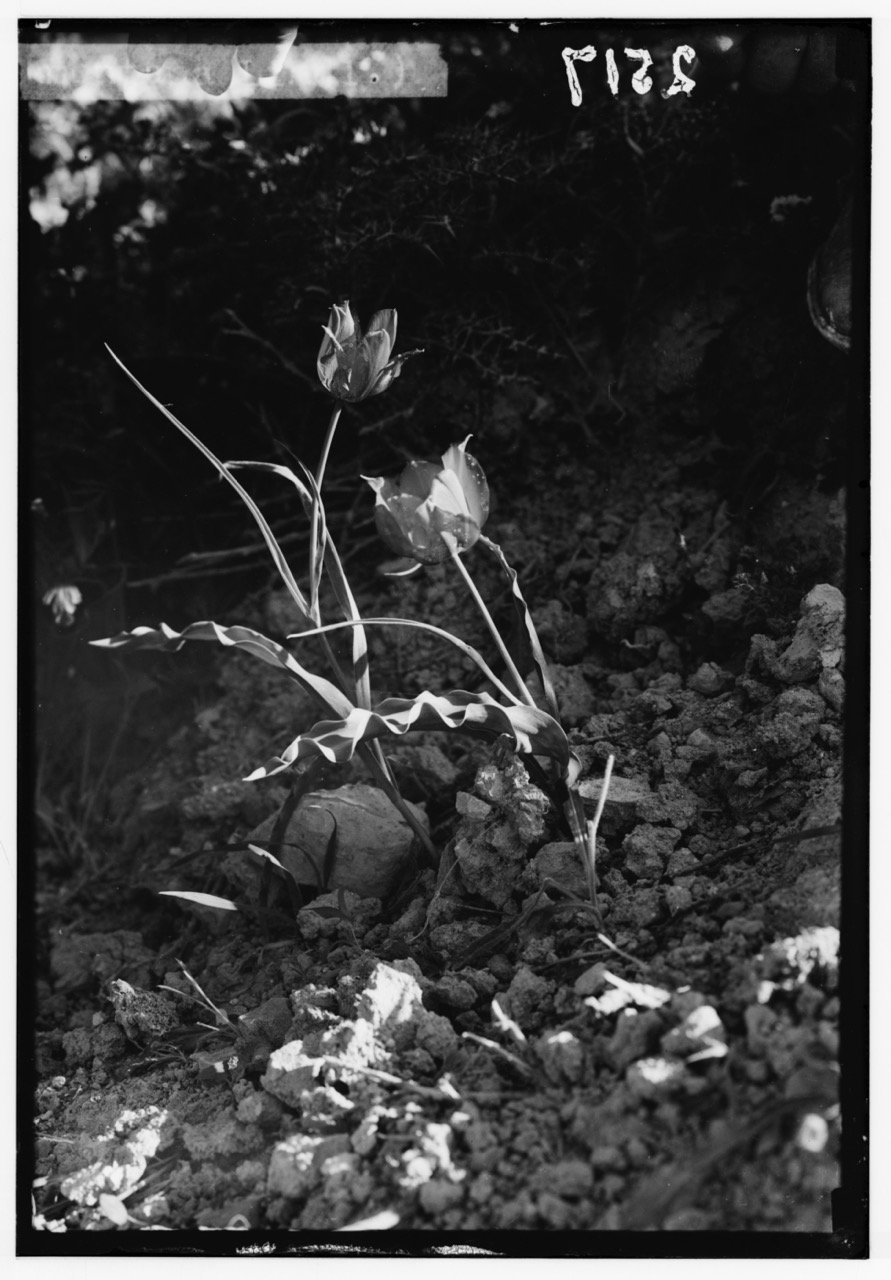
Tulip (Tulipa montana Lindl)
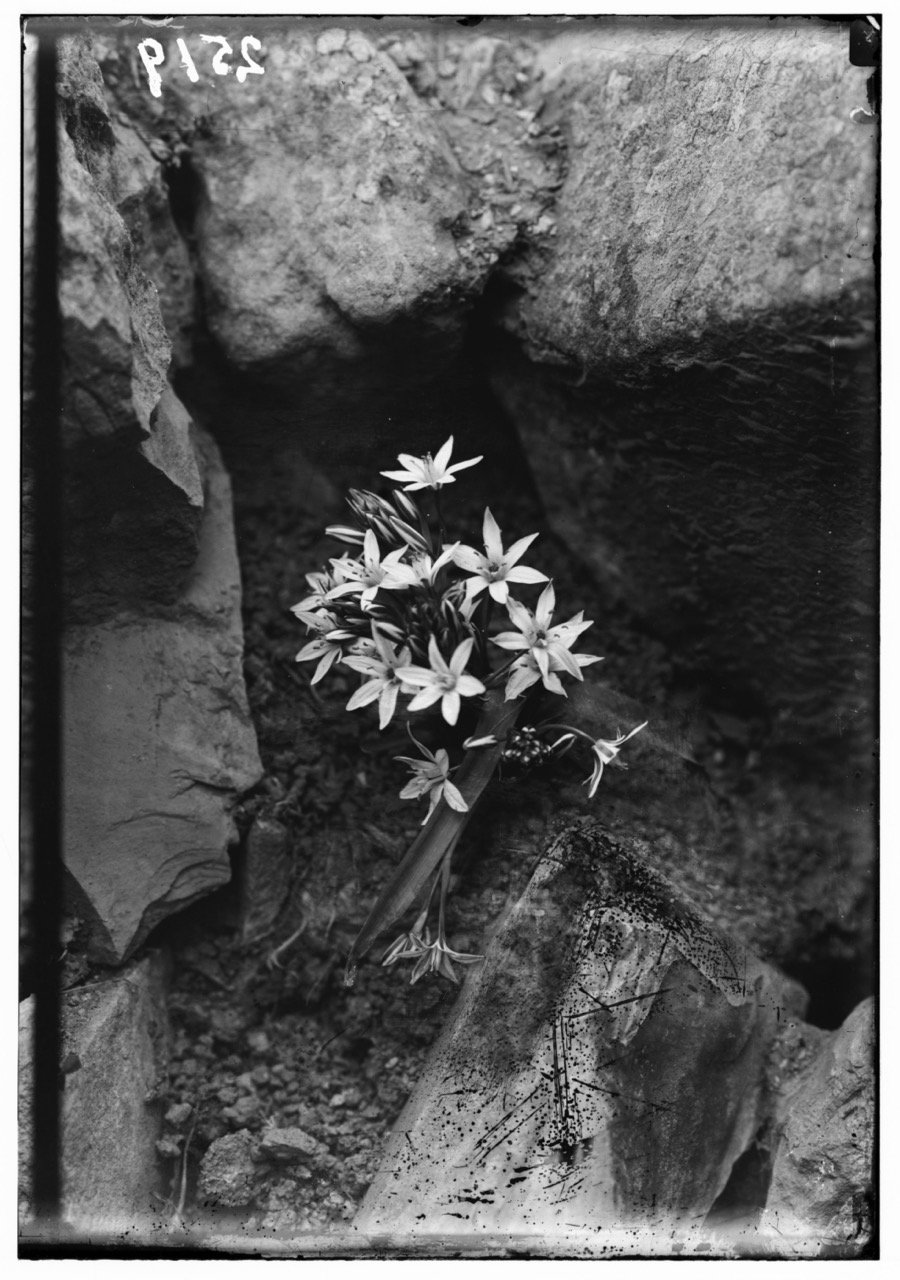
Bethlehem-star (Ornithogalum fimbriatum Wild)
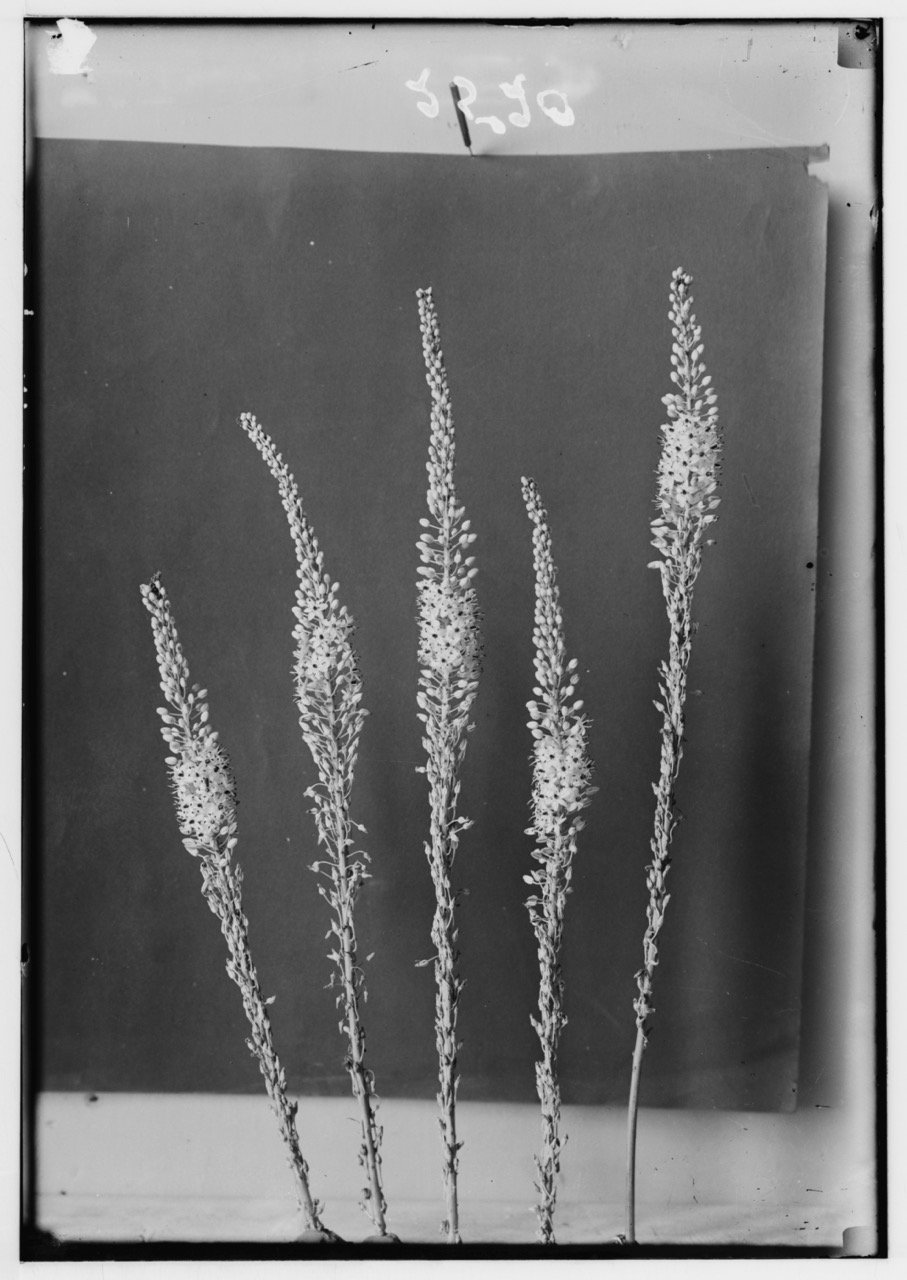
Maritime squill (Urginea maritima Baker)

Syrian poppy (P. syriacum Boiss. et Bl.)
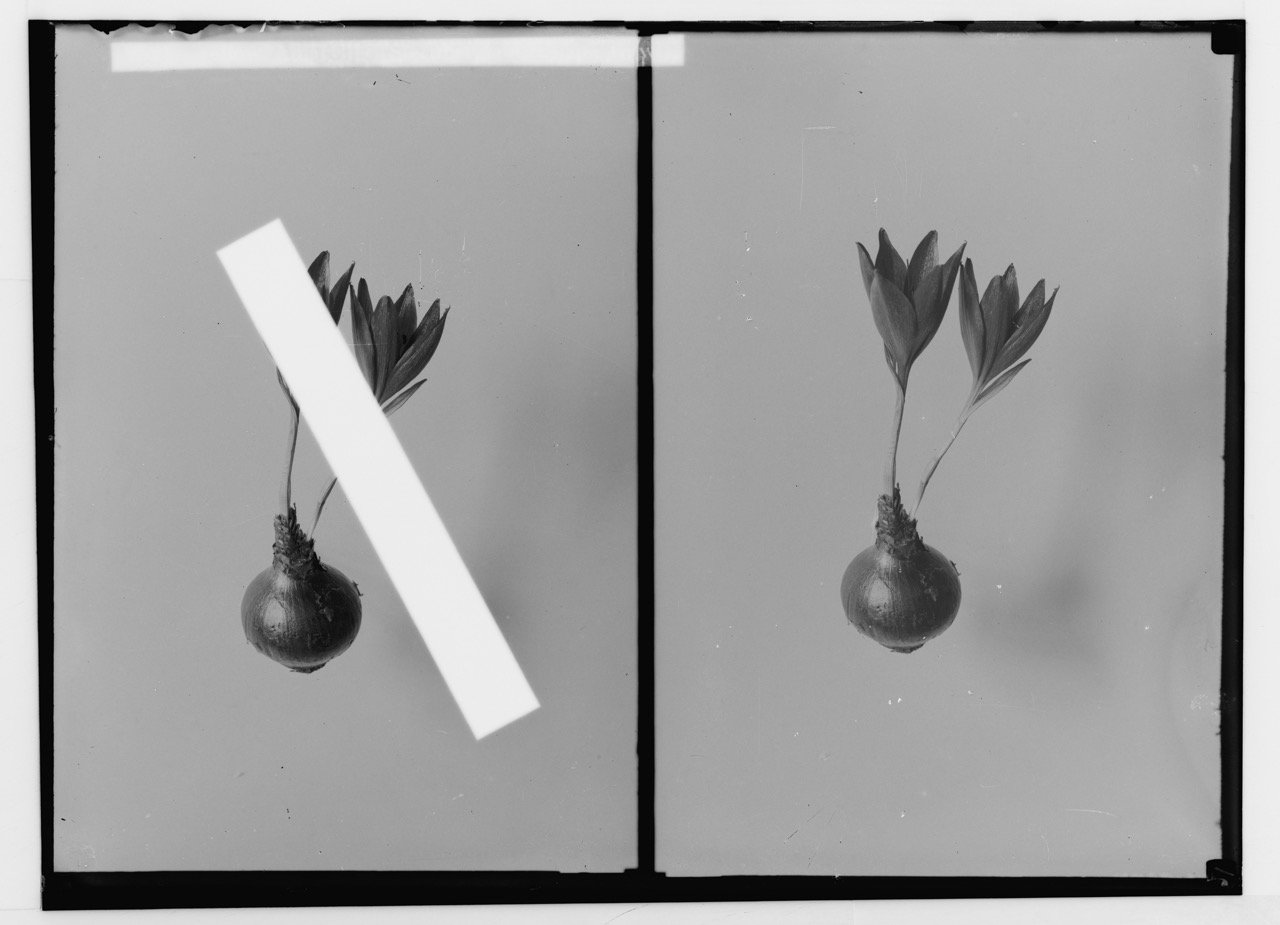
Yellow amaryllis (Sternbergia Clusiana Gawl)
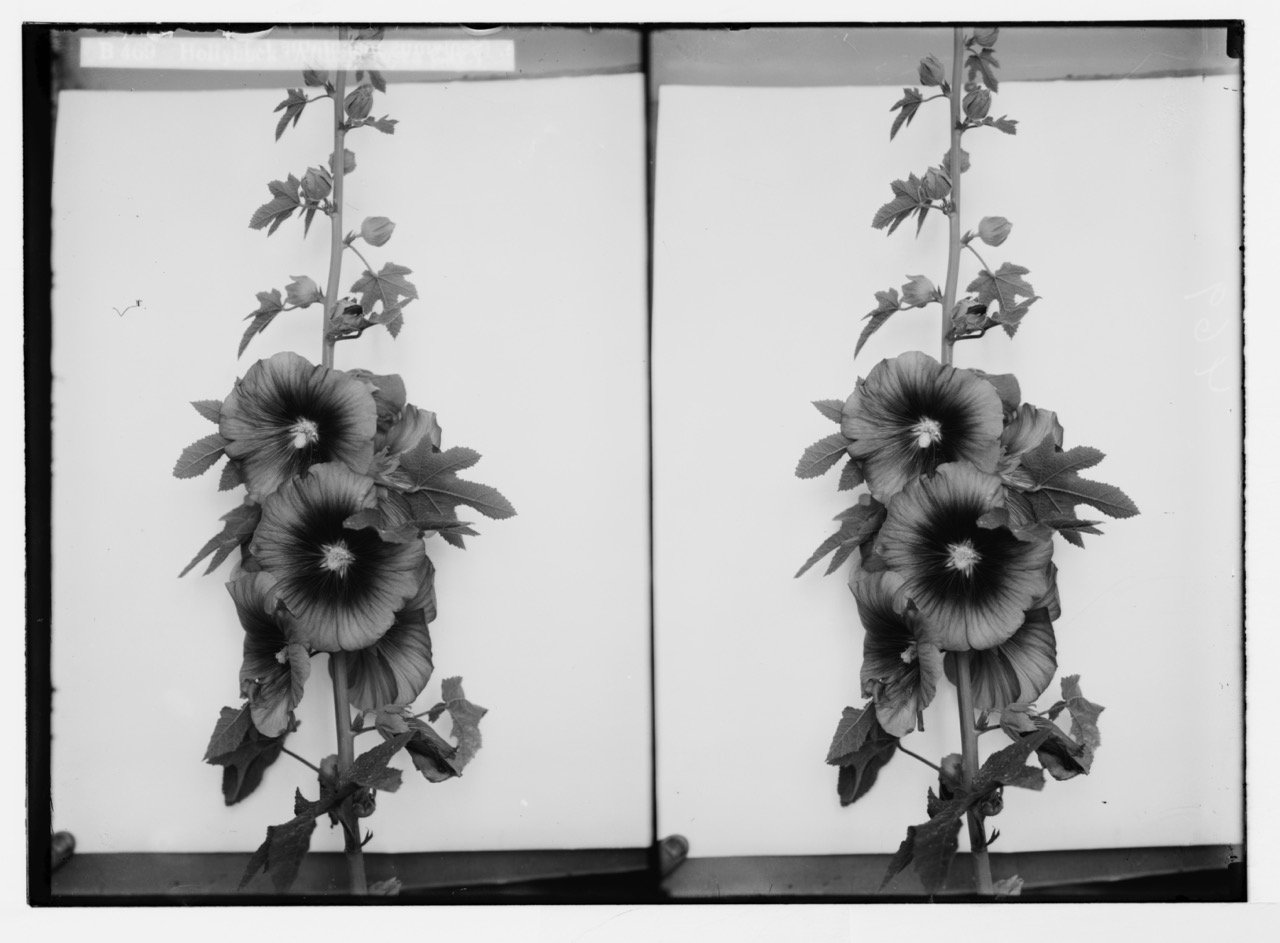
Hollyshock (Althaea rosea Cav.)
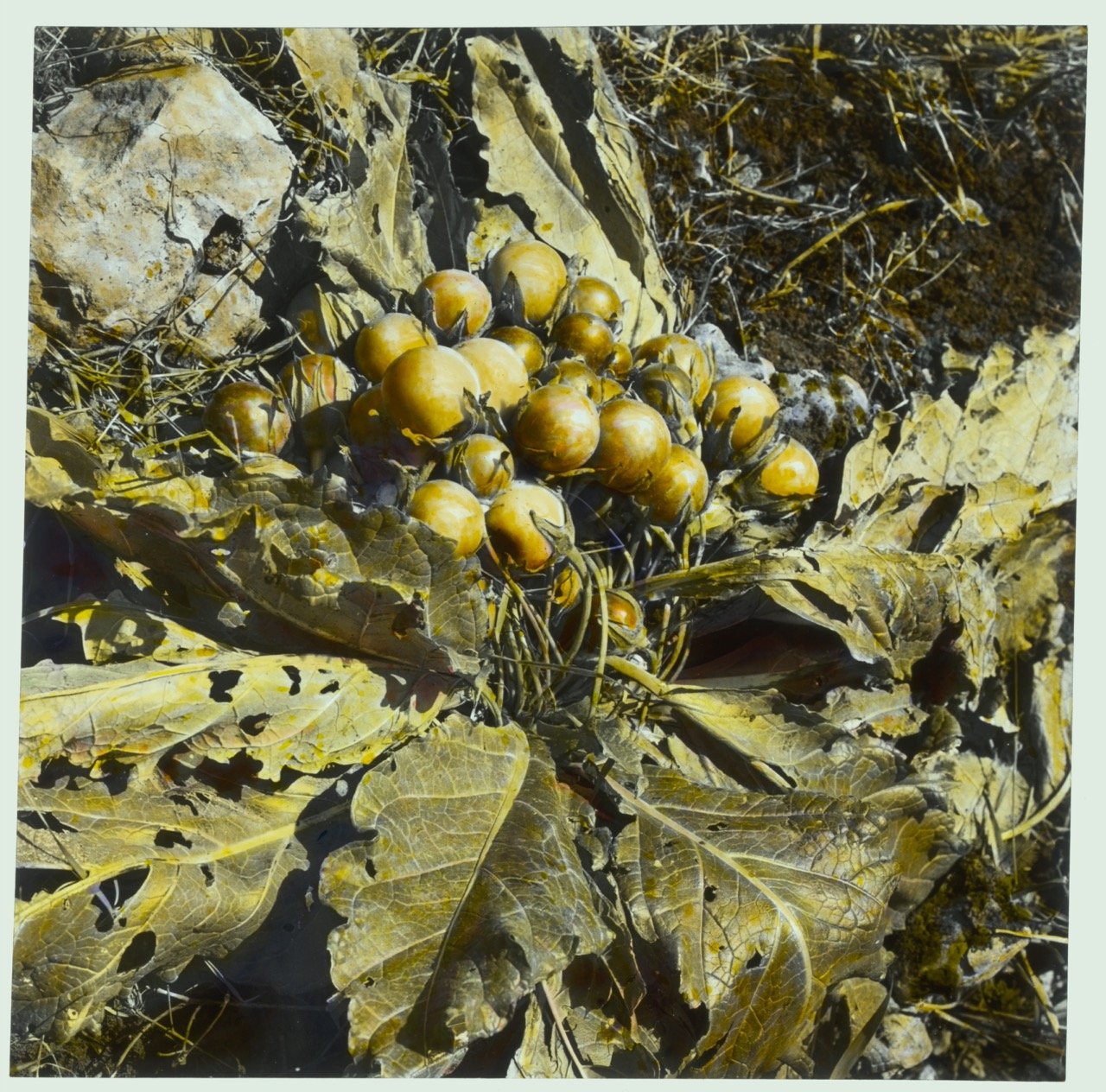
Mandrake with fruit (Mandragora officinarum L.)
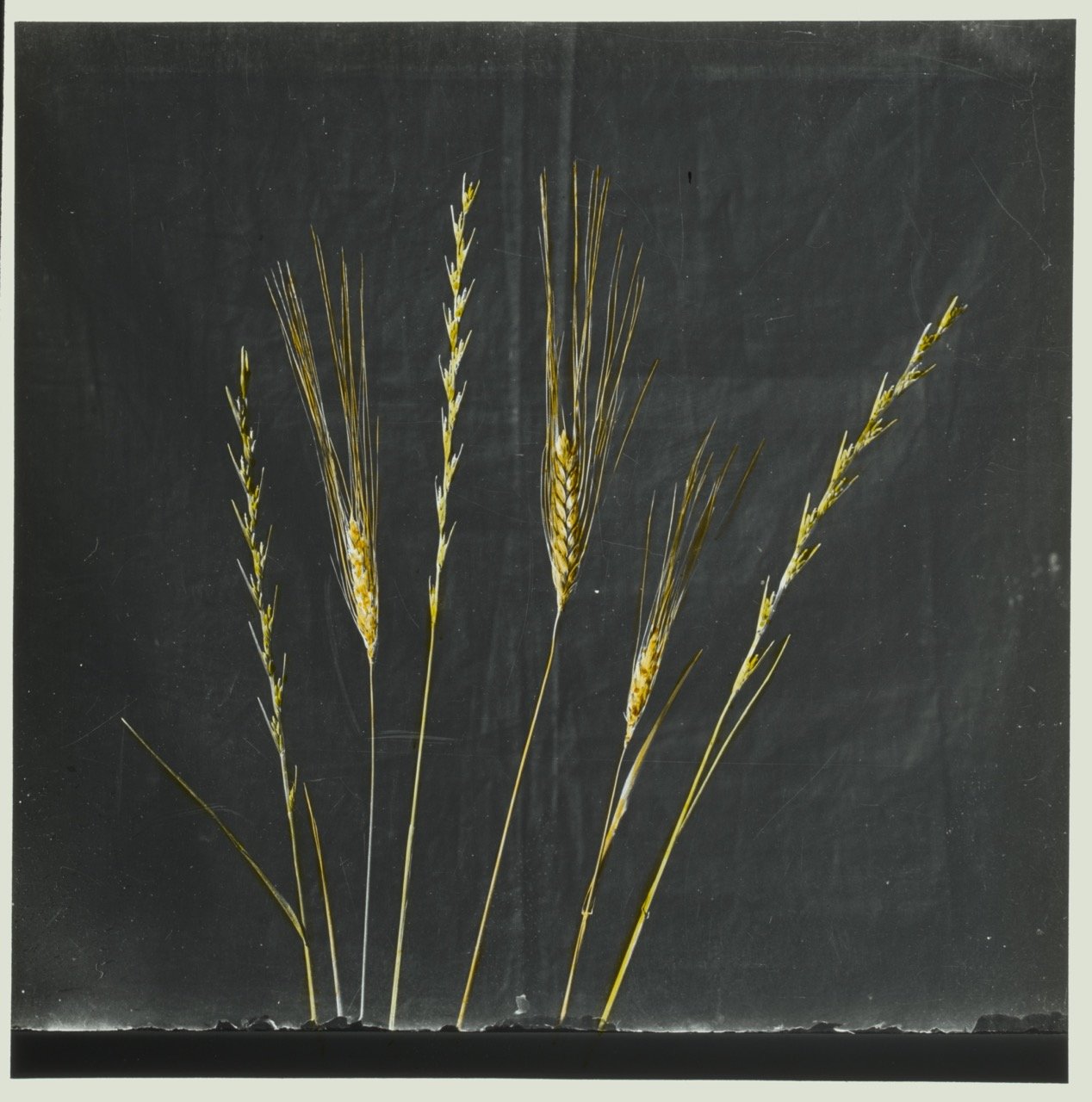
Tares and wheat (Lol. tem. L., Triticuum vulgare Vill)
